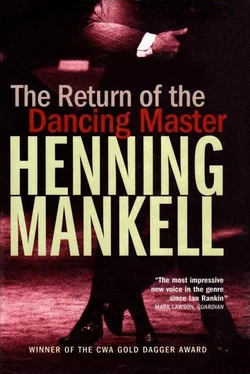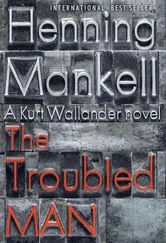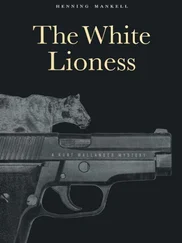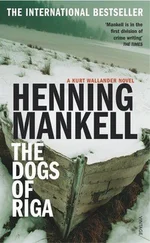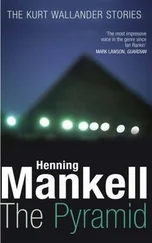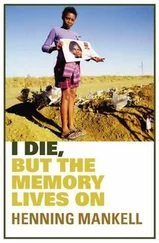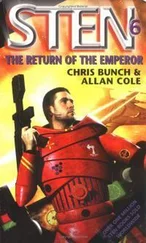He turned to the man at the next table, who seemed to be lost in thought.
“What are they saying on the news?” he said.
The man turned to the television and listened. “Two men have been murdered,” he said. “First one, and then another. Up in Norrland. One was a policeman, the other played the violin. They think they were killed by the same murderer.”
The picture on the screen disappeared, but he knew now that his eyes had not deceived him. The first man was Mattson-Herzén, or Molin, and the second one was the man he’d once seen visiting him. He’d also been murdered.
Silberstein put down his glass and tried to think straight. The same murderer . That wasn’t true. He had killed the man who called himself Molin, but not the other man.
He sat quite still. The ice hockey match had started again.
The night of November 3, 1999, was one of the longest Stefan Lindman had ever endured. When dawn finally broke, faint light creeping over the wooded hills, it felt as though he were in a weightless vacuum. He’d stopped thinking long ago. Everything happening around him seemed surreal, a nightmare. A nightmare that began when he’d walked around the trees and found Andersson’s body.
He had forced himself to feel for traces of a pulse, which he knew had stopped forever. The body was still warm — at any rate, rigor mortis had not yet set in. That could mean that whoever shot him was still in the vicinity. The light from Lindman’s flashlight had shown where the shot blast had hit him, just over his heart. He’d almost fainted. It was a big hole. Andersson had been executed at close range, with a shotgun.
The dog had started howling as soon as Lindman tied it up. His first thought was that it might have found the scent of the killer, who could be very close. Lindman had raced back to it, scratching his face badly on tree branches. Somewhere along the way he’d also lost his cell phone, which had been in his shirt pocket. He’d taken the dog back to the house and called the emergency number. Lindman had mentioned Larsson’s name, and from then on, the man on duty in Östersund had asked no unnecessary questions. He’d asked if Lindman had a cell phone, was told he’d dropped it somewhere, and said he would call the number to help him find it. Now it was beginning to turn light; his telephone was still lost, and he had not heard it ringing. He had the feeling the whole time that the killer was close by. He’d crouched low as he ran to his car, and reversed into a garbage can as he turned to drive to the main road and give directions to the first of the police cars. The man in Östersund said they would be coming from Sveg.
The first to arrive was Johansson. He had a colleague with him, Sune Hodell. Lindman led them to Andersson’s body, and both officers drew back in horror. Then time had dragged as they waited for daylight. They set up their base in Andersson’s house. Johansson had been in constant telephone contact with Östersund. At one point he’d come into the living room where Lindman was lying down on the sofa with a nosebleed, and announced that Larsson was on his way from Östersund. The cars from Jämtland showed up soon after midnight, and were closely followed by the doctor. Johansson had gotten through to him in a hunting lodge north of Funäsdalen. He’d contacted colleagues in the neighboring provinces of Hälsingland and Dalarna to tell them what had happened. Once during the night Lindman had heard him talking to the Norwegian police in Rorös. The forensic team had rigged up a floodlight in the forest, but the investigation had been marking time, waiting for the light of morning.
At 4 A.M. Larsson and Lindman were alone in the kitchen.
“Rundström will be here as soon as it becomes light,” Larsson said. “Plus three dog handlers. We’ll bring them in by helicopter, that’s the easiest way. But he’s bound to wonder what you’re doing here. I need to have a good explanation to give him.”
“Not you ,” Lindman said. “ I need a good explanation myself.”
“Well, what is it?”
Lindman thought for a while before answering. “Maybe it was that I wanted to know if he’d remembered anything,” he said, eventually. “Concerning Molin.”
“And you stumbled upon a murder? Rundström will understand that, but he’s going to think it odd even so.”
“I’m getting out of here very soon,” Lindman said.
“Okay. But not before we’ve talked through what happened here.”
Then one of Larsson’s colleagues had appeared and reported that the Helsinborg police had informed Andersson’s wife what had happened. Larsson went off to talk to somebody, possibly Mrs. Andersson, on one of the many cell phones that seemed to be ringing constantly. Lindman wondered how it had been possible to conduct a criminal investigation in the days before cell phones, and then he wondered about what mechanisms come into play when a murder investigation gets under way. There are set routines that have to be followed, procedures where everybody knows exactly what to do. But beyond the routines, what happens then?
Lindman thought he could see what was going on inside Larsson’s mind, and he was having similar thoughts himself. Or at least, trying to have. He was handicapped by the image that kept recurring in his mind’s eye. Andersson tied to a tree trunk with a rope. The enormous entry wound. A blast or more than one blast from a shotgun at close range.
Andersson had been executed. An execution squad had appeared in the darkness, held a court martial, carried out the sentence, and then disappeared as discreetly as it had arrived. This is no straightforward little murder either, Lindman thought several times as the night progressed. But if it isn’t, what is it? There must have been a link between Molin and Andersson. They form the base of a triangle. At its missing tip is somebody who shows up under cover of night, not once but twice, and kills two old men who, on the face of it, have nothing in common.
At that point all the doors slammed shut. This is the heart of the investigation, he thought. There is some invisible connection between the two men, a link that is so fundamental that somebody kills both of them. This is what Larsson is thinking about while he’s going through the routines and waiting for the dawn that never seems to come. He’s trying to see what is hidden under the stones.
Lindman stayed close to Larsson throughout the night. He followed him when they hurried back and forth between the scene of the crime and the house they had made their headquarters. He’d been surprised by how lightly Larsson seemed to be approaching his work. Despite the horrific image of a man messily shot and tied to a tree, he heard Larsson’s cheerful laughter several times. There wasn’t a trace of callousness or cynicism about him, just that liberating laughter that helped him to endure all the horror.
Morning came at last, and a helicopter sank down onto the patch of grass behind the house. Out jumped Rundström and three dog handlers with Alsatians tugging eagerly at their leashes. The helicopter took off again at once and was soon out of sight.
In the morning light, all the activities that had gone so slowly during the hours of darkness changed character. The officers who had been working nonstop since they arrived on-site were tired and their faces as gray as the sky, but now their tempo increased. After giving Rundström a brief summary, Larsson and the dog handlers gathered around a map of the area and divided the search between the three of them. Then they left for the place where the body was now being released from the tree.
The first dog found Lindman’s cell phone right away. Somebody had stepped on it during the night and the battery wasn’t functioning. Lindman put it in his pocket and the thought struck him: who would inherit it if he didn’t survive the cancer?
Читать дальше
